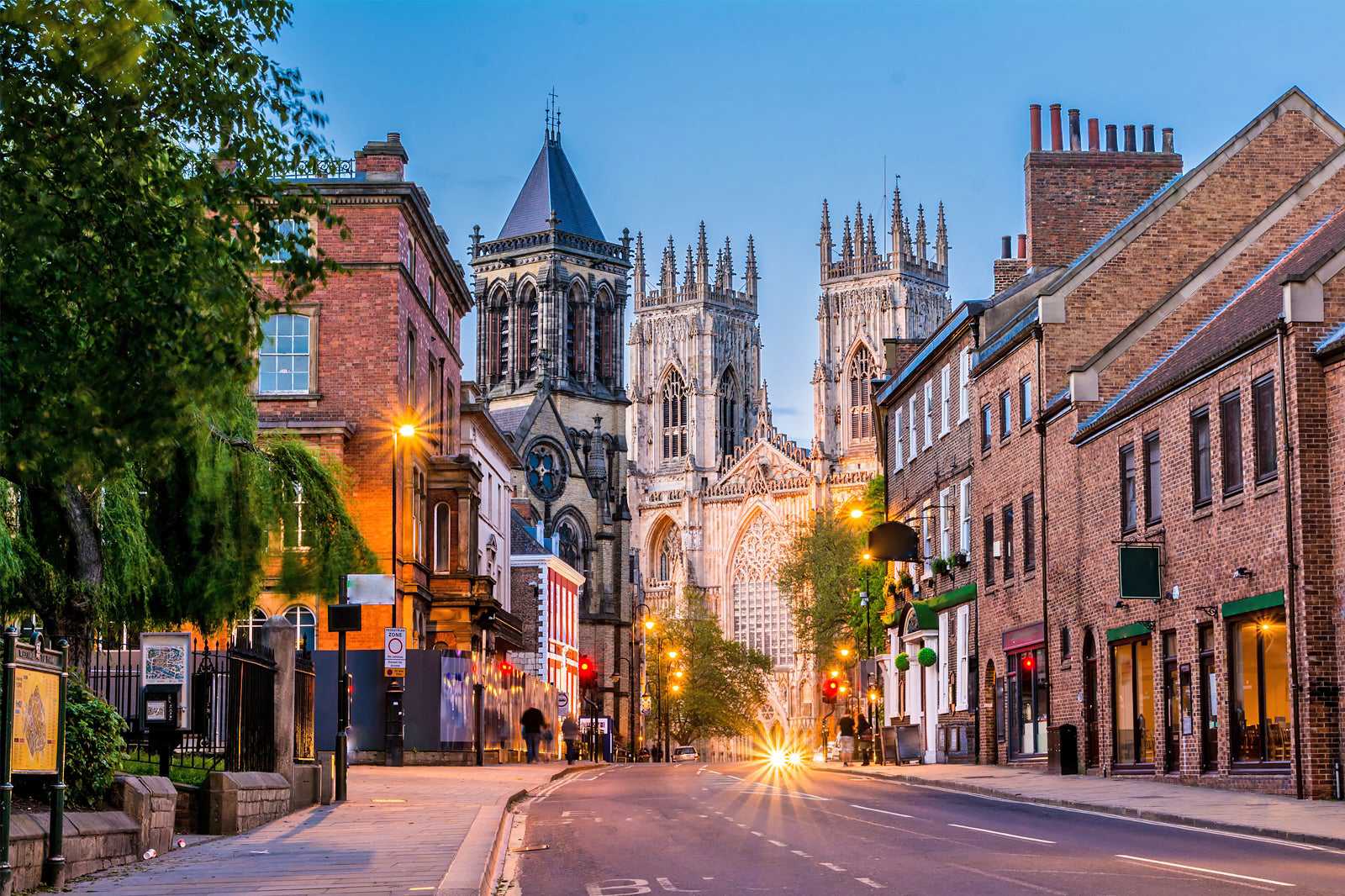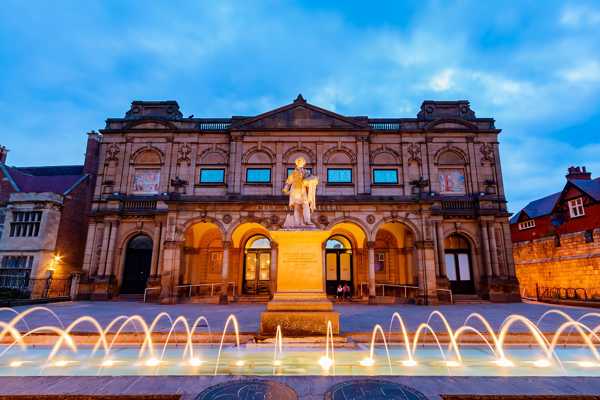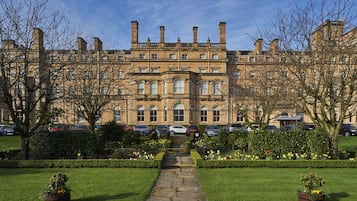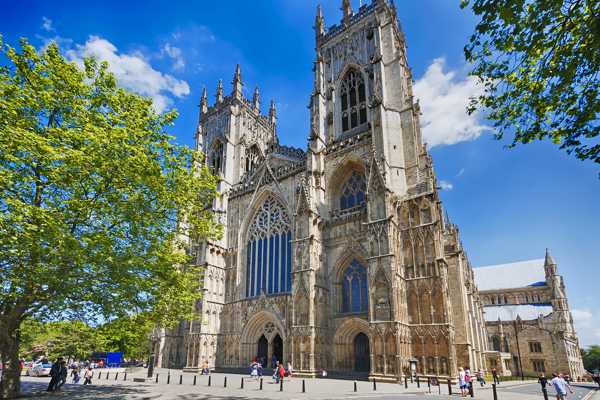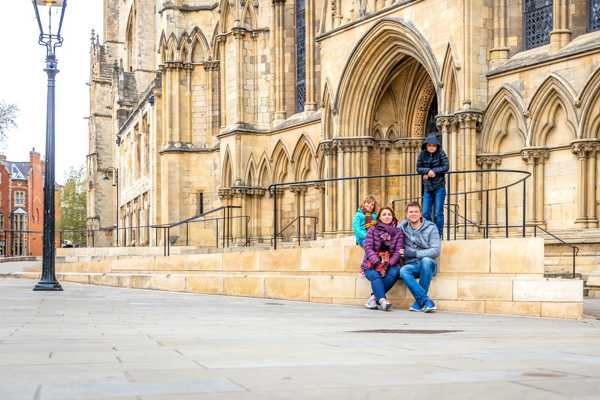There are hidden gems in York that happen to be in plain sight. While the city stands out for its big features like York Minster, The Shambles, Clifford’s Tower and the city walls, there are dozens of little details that many visitors simply don’t realise are there. Some are even unknown to locals!
York has played an important role in British history, and signs of that history can still be seen today – if you know where to look. These delightful little details can also liven up your Instagram, adding something different to your feed besides the already well-known views of this beautiful destination.
- 1
York Minster
The giant landmark with cheeky little details
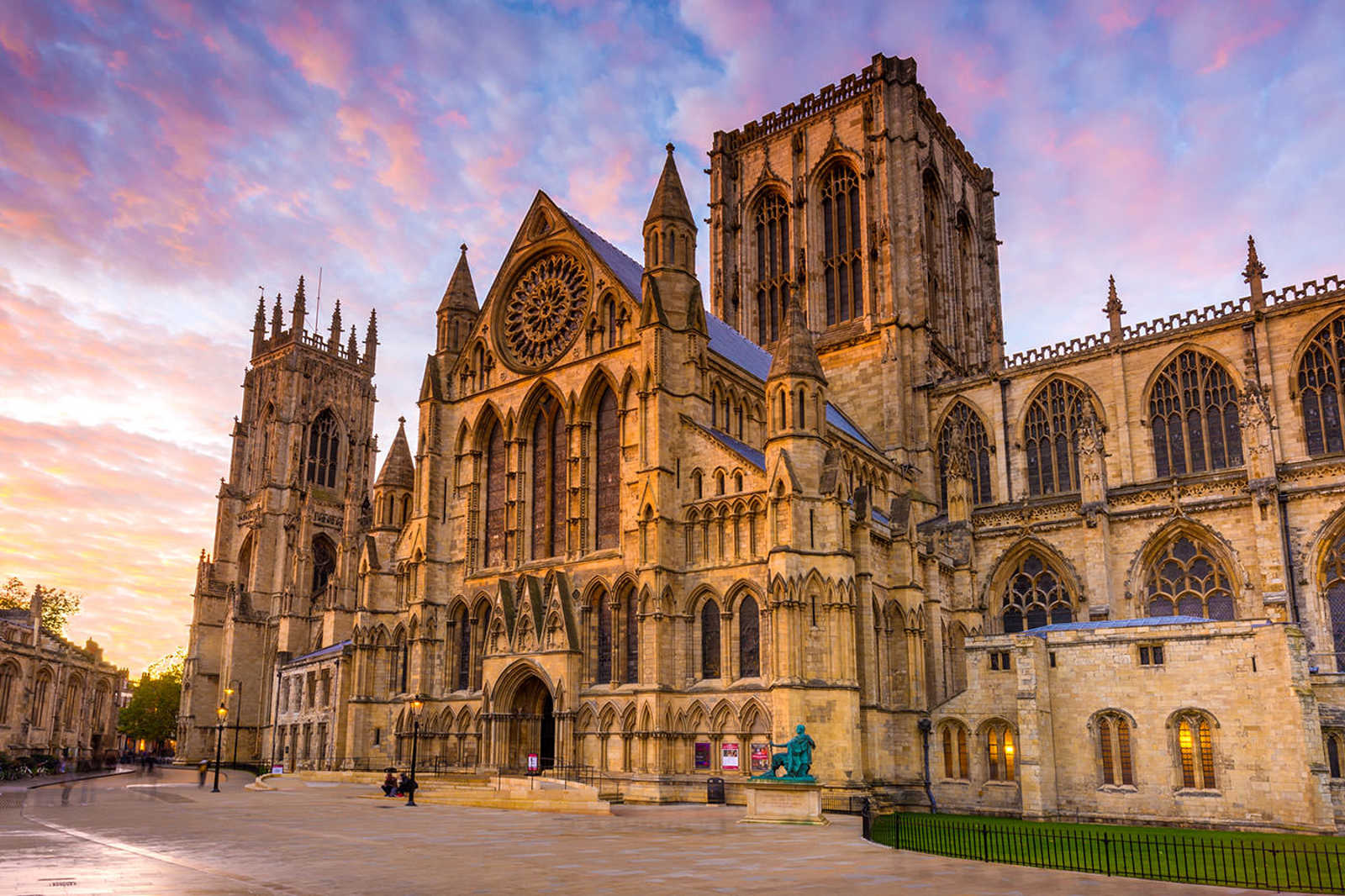
- Budget
- Couples
- History
- Photo
- Unusual
York Minster is such an icon that it’s impossible to talk about York without mentioning it. The 13th-century cathedral dominates the skyline as, thanks to an obscure local law, its 235-ft-tall tower must remain the tallest structure in the city. You can get wonderful photos from the top, assuming you can manage the 275 steps.
However, the really interesting features of the giant building are the little details. Look at the West Window for The Heart of Yorkshire – a romantically shaped stained-glass window. The 600-year-old Great East Window, by contrast, has some rather graphic depictions of the Apocalypse. On the outside, take a closer look at the grotesques. Some of these architectural features live up to their name, including one depicting a man who has dropped his trousers and is preparing to relieve himself!
Location: Deangate, York YO1 7HH, UK
Open: Monday–Saturday from 9 am to 4.30 pm, Sunday from 12.45 pm to 3 pm
Phone: +44 (0)1904 557200
Map - 2
Clifford’s Tower
Lots of York’s history all in one place
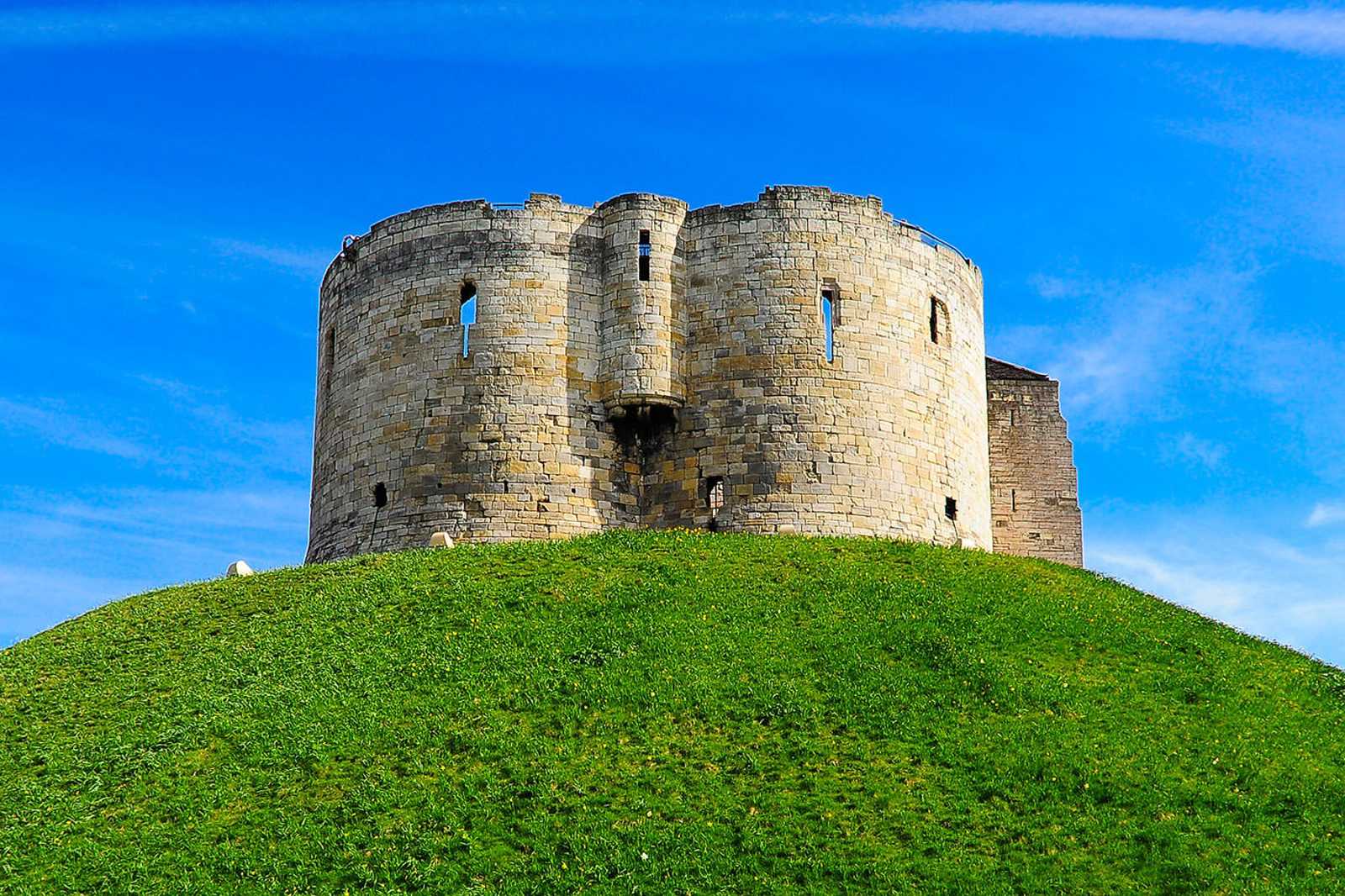
- Budget
- History
- Photo
- Unusual
Clifford’s Tower is actually a part of a broader complex that has since been lost to time – York Castle. It was originally built by William the Conqueror in the typical Norman motte-and-bailey design. Clifford’s Tower is what remains of the motte – the elevated keep that offers great views over the rest of the city. Visit in spring to see the hill turn yellow with daffodils that commemorate the massacre of Jews here in 1190.
The tower itself is a magnet for tourist cameras, and justly so. However, the whole area is a hub of attractions. Within a minute’s walk, you’ll find the York Army Museum, Fairfax House, and York Castle Museum. Check out the lovely Tower Gardens, too, and follow them south along the River Ouse to the Blue Bridge, which crosses the confluence of the Ouse and the Foss.
Location: Tower St, York YO1 9SA, UK
Map - 3
Bitchdaughter Tower
Yes, that’s actually what it’s called!
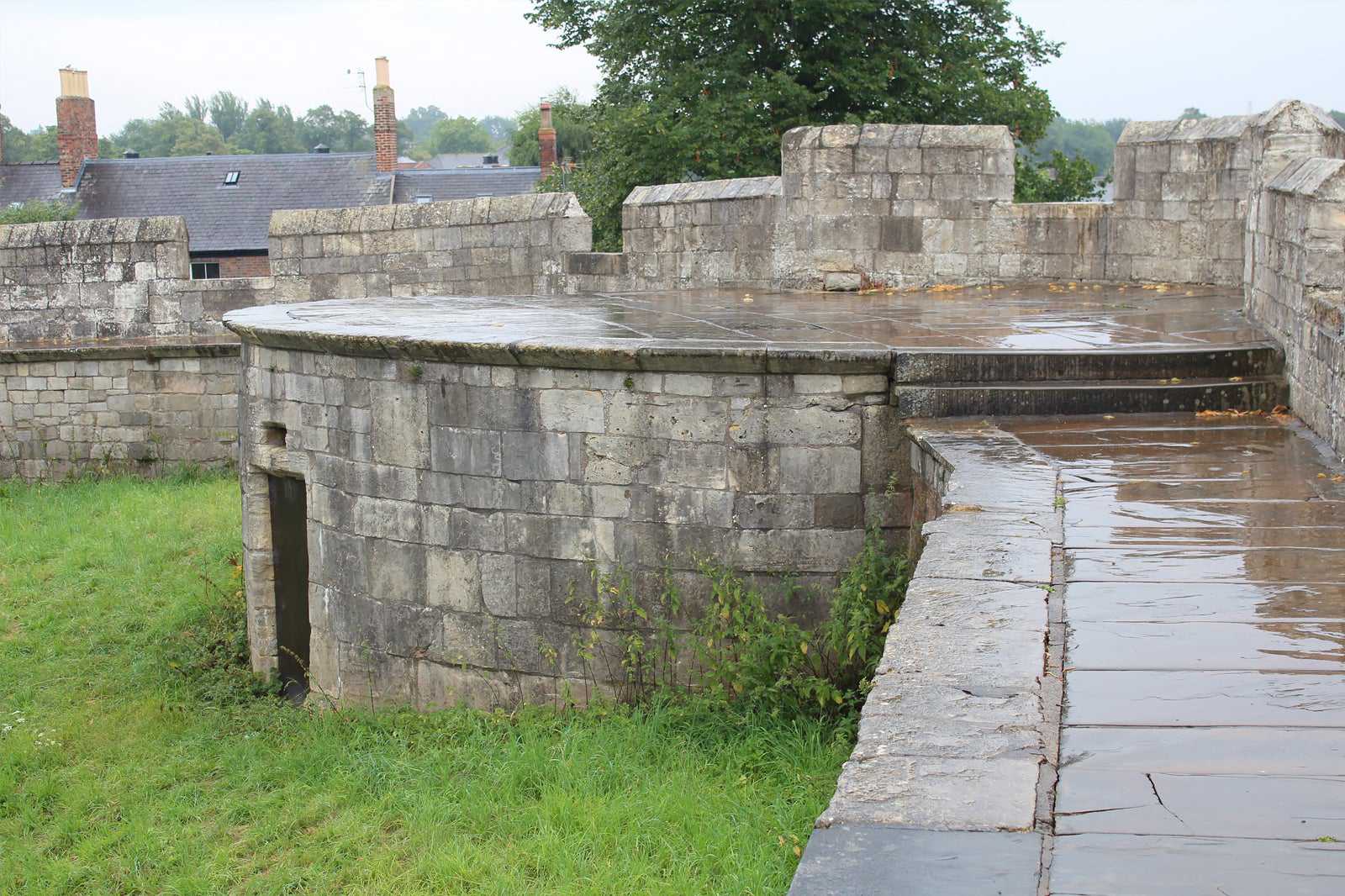
- Budget
- History
- Photo
- Unusual
The weirdly named Bitchdaughter Tower forms one of the corners of York’s famous city walls. It was originally part of a little-known second Norman Castle in York that was centred around the nearby Baile Hill. The famous Clifford’s Tower was the centre of the first. While the reason for the alarming name is uncertain, it may refer to the tower’s former use as a prison – an especially unpleasant one.
Bitchdaughter Tower is one among many highlights on the York city walls. The beautiful old gatehouses (bars) are equally worth investigating and the walls around the minster offer especially good views of that beautiful part of town.
Location: Price’s Ln, York YO23 1DG, UK
Mapphoto by Chabe01 (CC BY-SA 4.0) modified
- 4
Whip-Ma-Whop-Ma-Gate
Neither one thing nor another
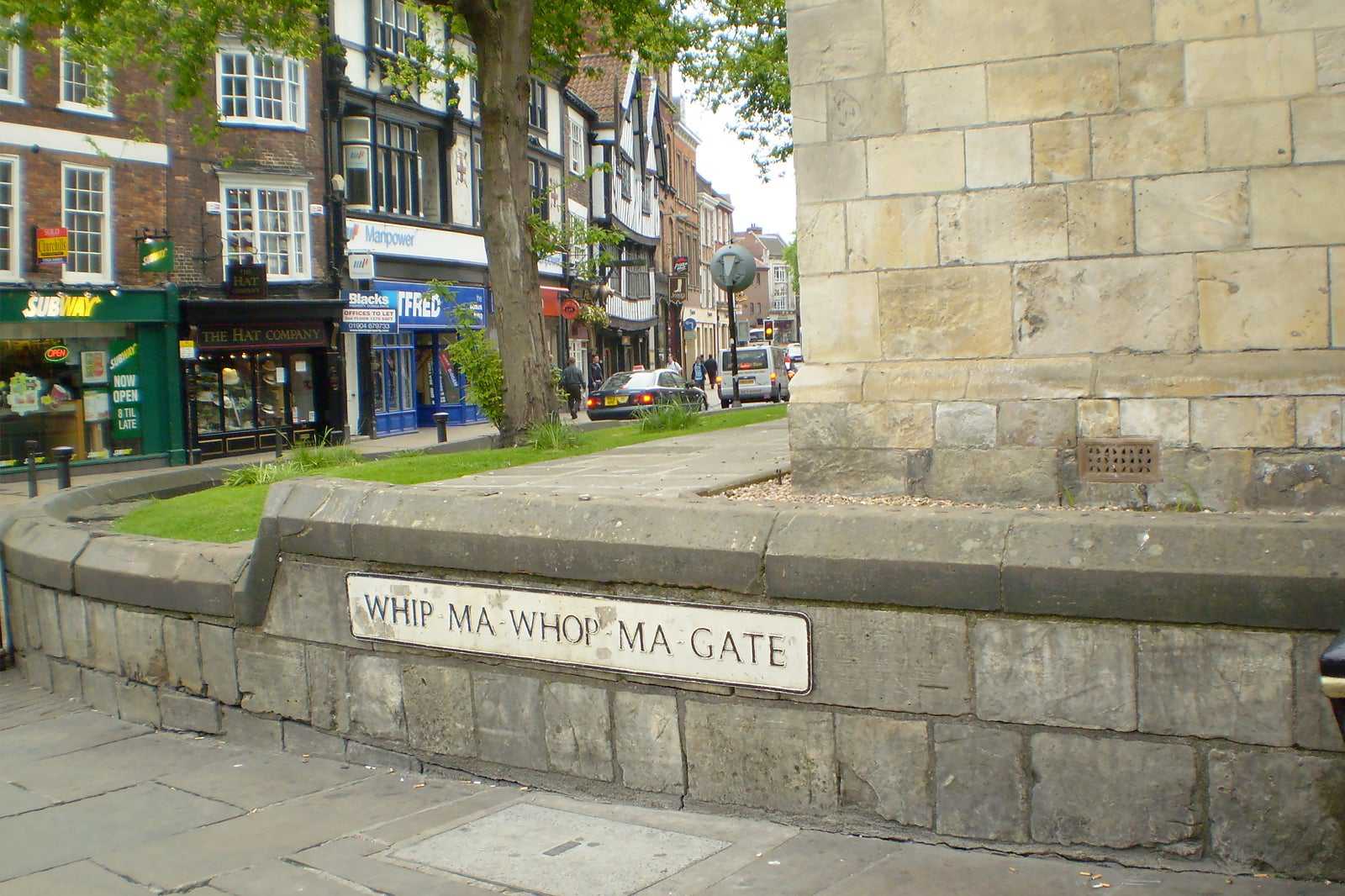
- Budget
- Photo
- Unusual
Whip-Ma-Whop-Ma-Gate is a bizarre little street connecting Pavement to the start of Colliergate. At about 100 ft in length, it’s said to be the shortest street in the city and yet has the longest name. It takes almost as long to spell the name as it takes to walk its length, passing only a few shops and St Crux – a church that is just as quaintly tiny.
There’s a tiny alley off Whip-Ma-Whop-Ma-Gate that connects it to the Shambles. The street’s name, first recorded in 1505 as “Whitnourwhatnourgate”, aptly describes it as ‘neither one thing nor the other’, though a plaque attached to the church gives the meaning as ‘what a street!’.
Location: Whip-Ma-Whop-Ma-Gate, York, UK
Mapphoto by Kaly99 (CC BY-SA 3.0) modified
- 5
Black Cat Trail
Can you find them all?
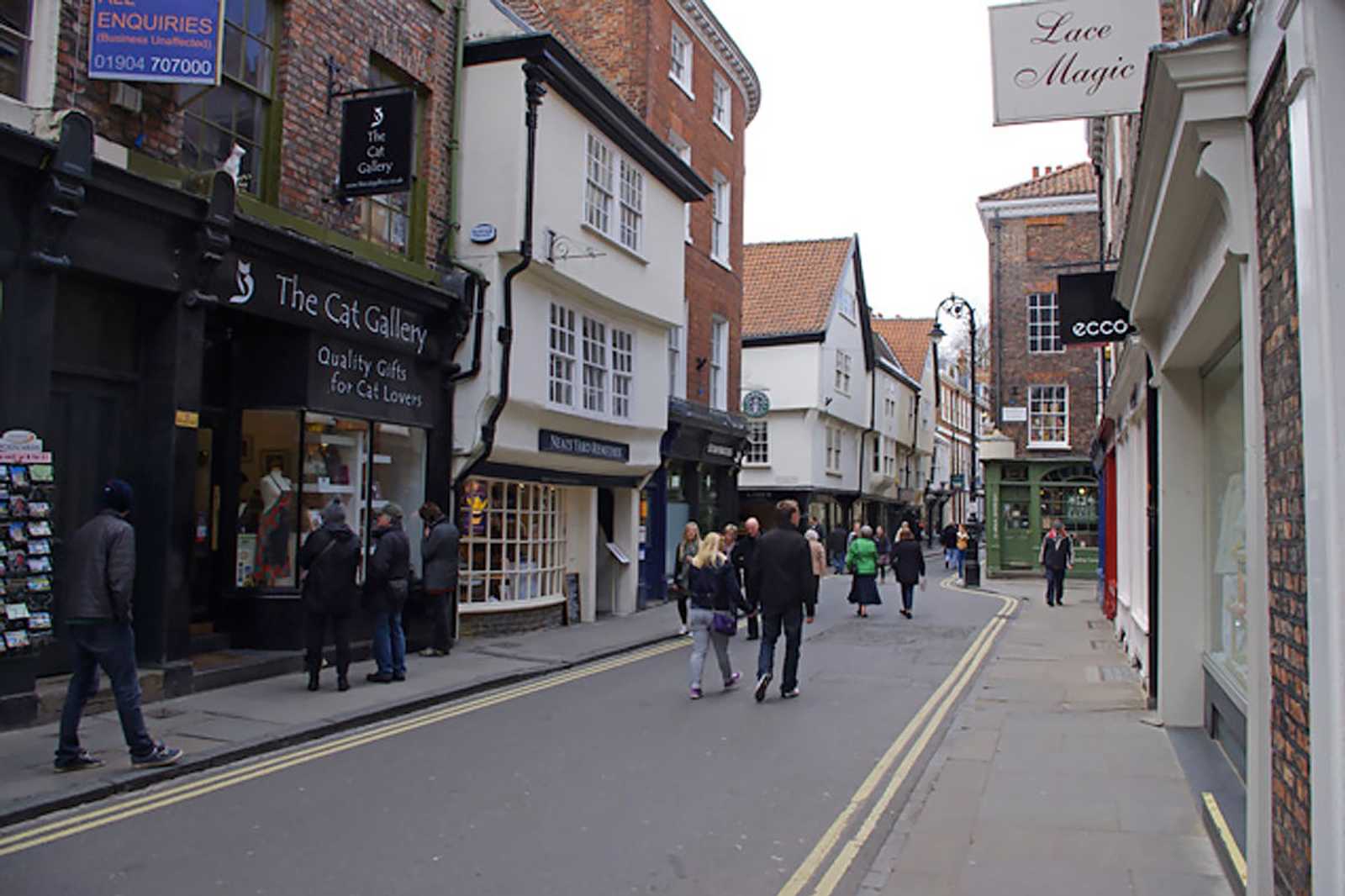
- Budget
- Families
- Photo
- Unusual
There’s a total of 23 cute little cat statues dotted around York, some dating back to 1920 and all hidden in plain sight. Since most are above street level, where busy shoppers rarely look, even some people who have lived in York their entire lives don’t realise they’re there. Despite being known as ‘the black cats’, a few are other colours.
You can get a map of where the cats are from The Cat Gallery on Low Petergate. Following the trail it suggests takes you from the gallery in a circuit around some of York’s star attractions. The route goes via the Yorkshire Museum, Coney Street, Low Ousegate (home of the original 2 cats, one of which is scaling a vertical wall), King’s Staith, Clifford’s Tower, The Shambles, Whip-Ma-Whop-Ma-Gate, King’s Square and York Minster. Pro-tip for spotting them: look high.
Location: 45 Low Petergate, York YO1 7HT, UK
Phone: +44 (0)1904 631611
Mapphoto by Ian Taylor (CC BY-SA 2.0) modified
- 6
St George’s Church
Visit the grave of Dick Turpin
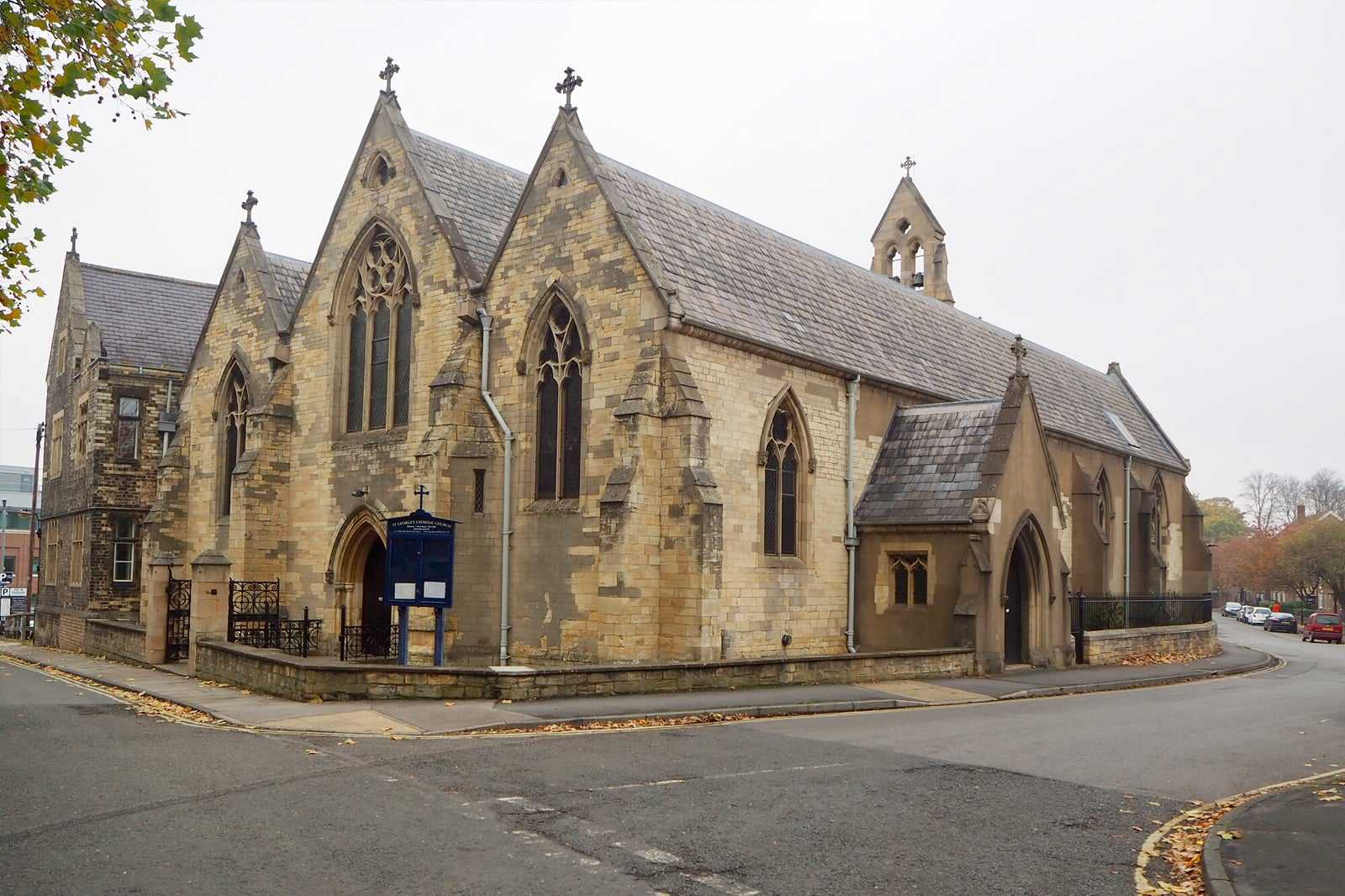
- Budget
- Photo
- Unusual
St George’s Church is not only a beautiful church dating from 1850 but is also the last resting place Dick Turpin, the legendary 18th-century highwayman. The [relatively] modern church replaces a medieval church of the same name, which was demolished in the 16th century.
Turpin became the star of many a story, play and pantomime after his death at York Tyburn in 1739. He was buried in the graveyard across the road from the modern church the morning after his execution. In a somewhat ironic turn of events for the famous thief, Turpin’s body was stolen – bodysnatchers dug it up to sell for use in medical research. An angry mob recovered the body and reburied it. You can still see his gravestone, which also shows the alias he was arrested under – John Palmer.
Location: 27 George St, York YO1 9PZ, UK
Phone: +44 (0)1904 623728
Mapphoto by Malcolmxl5 (CC BY-SA 4.0) modified
- 7
Rowntree Park
A beautiful riverside park with a sweet history
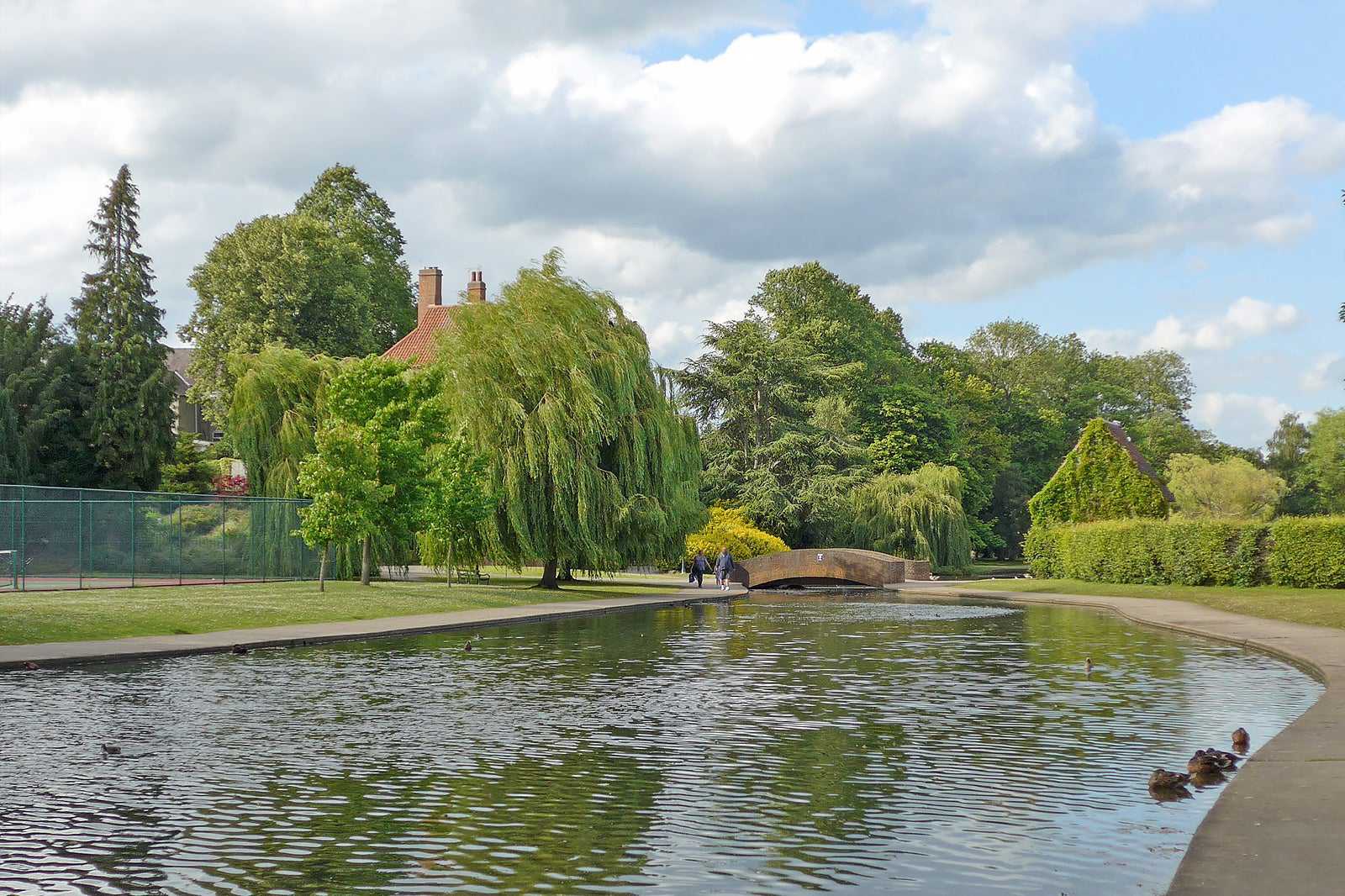
- Budget
- Families
- Photo
- Unusual
Rowntree Park was a gift to the City of York in 1921 from Messrs Rowntree & Co., as a memorial to their factory workers who fell in the First World War. The 30-acre park contains a lake, tennis courts, a basketball park, a skate park, a café, a playground and more. The impressive Millennium Bridge spans the River Ouse here, taking pedestrians and cyclists across to the Fulford area.
If the name of the park seems familiar, it’s because it comes from York’s past as “The Chocolate City”. It was once home to Rowntree’s (of Fruit Pastilles fame) and Terry’s (known for their Chocolate Orange). The smell of melted chocolate still wafts around the north-western part of the city from the Nestlé factory near York Hospital. Rowntree Park is on Terry Avenue, a short distance from The Chocolate Works, which is now a care home.
Location: Terry Ave, York YO23 1JQ, UK
Open: Monday–Friday from 9 am to 9.30 pm, Saturday–Sunday from 9 am to 9 pm
Map - 8
St Martin le Grand
A quaint church with a remarkable history
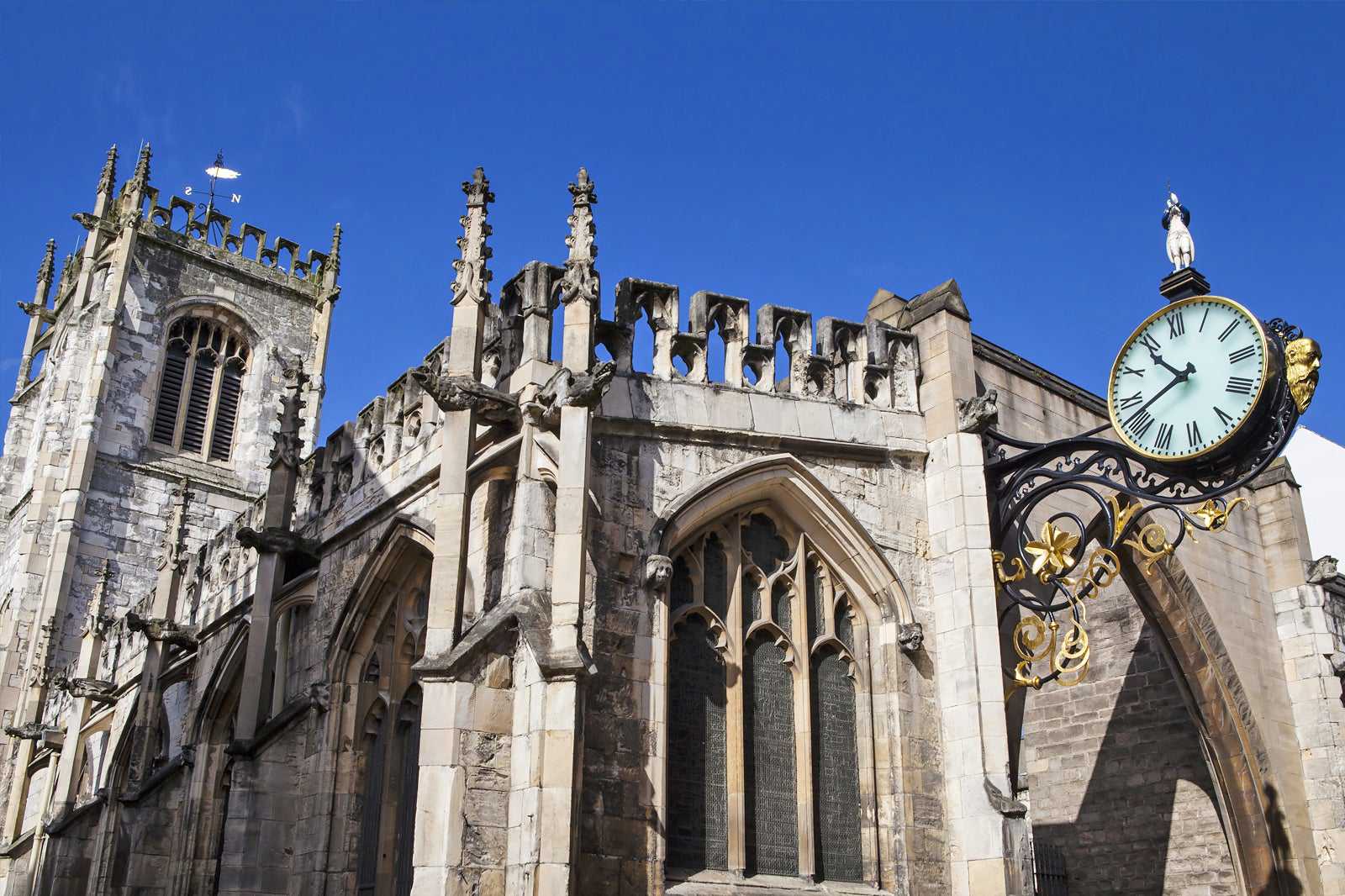
- Budget
- Photo
- Unusual
The charming little church of St Martin le Grand is a Grade II-listed building on Coney Street with a couple of interesting features. First built in the 11th century, it stands out for the elegant clock that sticks out of the eastern wall, overhanging the busy street. It was originally added in 1668 but was badly damaged on 29 April 1942 – the night of the one bombing raid that hit York in World War II. Much of the church was destroyed in the raid, but it and the clock were restored in the 1960s. The jolly “Little Admiral” figure atop the clock is the original, which somehow survived the destruction.
Other highlights of St Martin le Grand include a large medieval stained glass window that escaped the bombing because it had been removed for safe-keeping in 1940. The pipe organ was built in 1968 – a gift from the West German government in recompense for the York Blitz.
Location: 13 Coney St, York YO1 9QL, UK
Phone: +44 (0)1904 636512
Map - 9
York Railway Station
The most delightful way to arrive in York
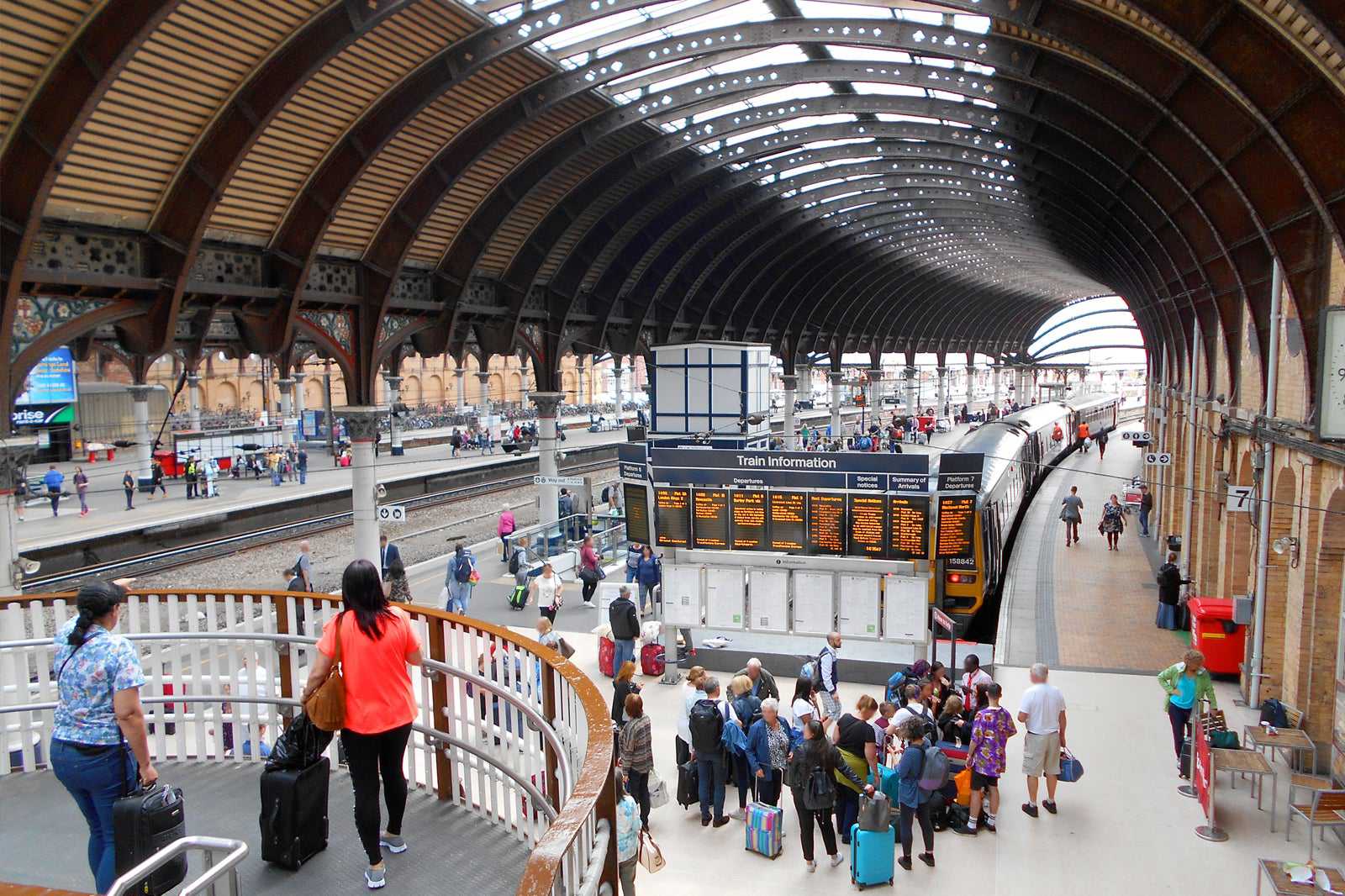
- Budget
- Photo
- Unusual
York Railway Station opened in 1877 and retains a beautiful Victorian-era look, especially by the entrance. The station has been expanded various times and the later platforms have a more modern design. However, the entrance hall and the first few platforms have vaulted ceilings, wrought iron footbridges and stone walls.
It’s certainly a delight to arrive and depart from York station, but it’s not your typical tourist attraction. However, just around the corner is the National Rail Museum, which certainly is. If you like trains, York should certainly be on your bucket list.
Location: Station Rd, York YO24 1AB, UK
Mapphoto by G-13114 (CC BY-SA 4.0) modified
- 10
Stamford Bridge battlefield
A turning point in British history
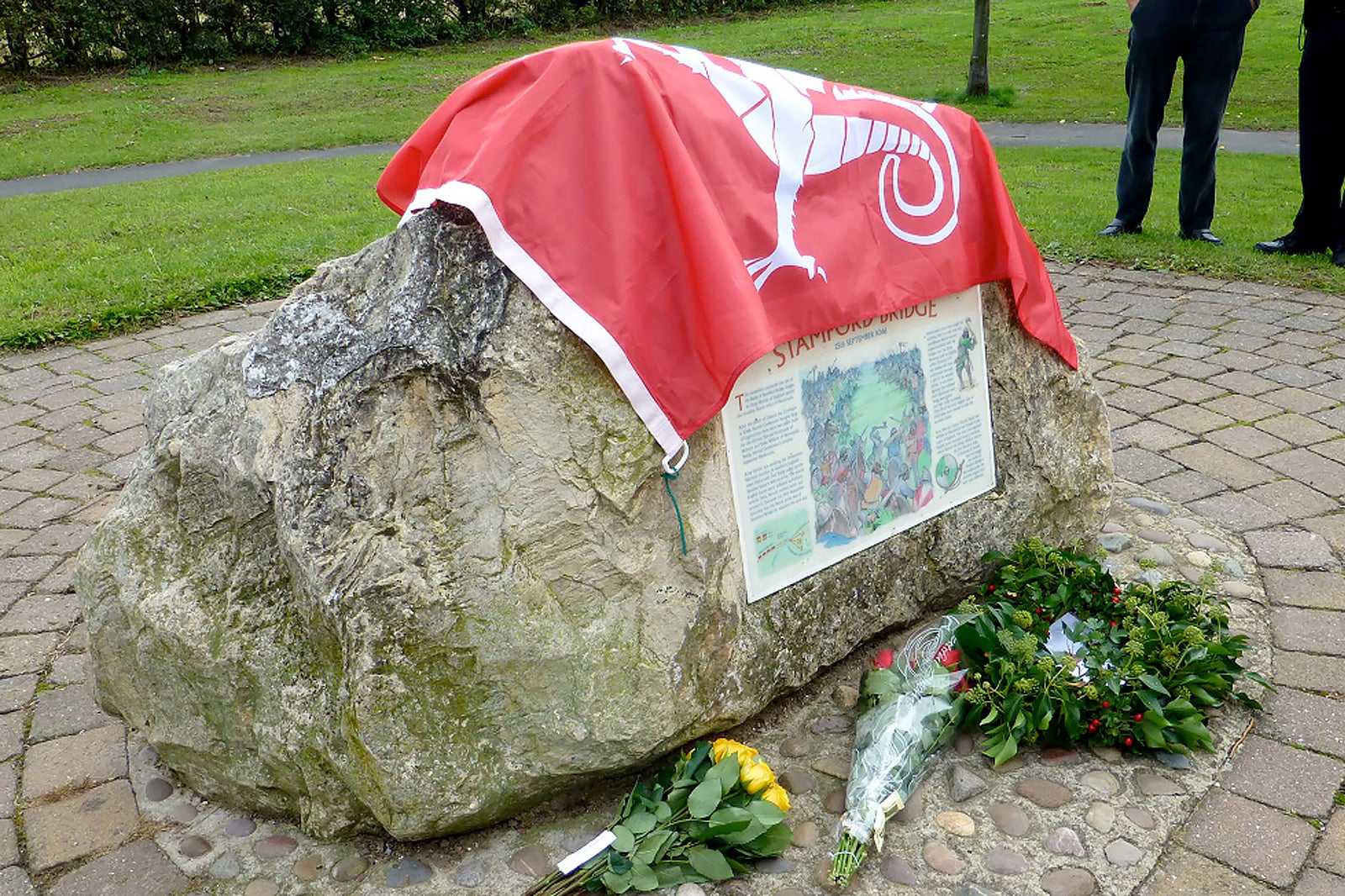
- Budget
- Photo
- Unusual
The Battle of Stamford Bridge was arguably one of the most important in British history yet is comparatively little-known. It happened just east of York on 25 September 1066 – the same year as the more famous Battle of Hastings. King Harold came north to deal with Norse invaders near York before rushing south to handle the Normans. While he was astoundingly successful at Stamford Bridge, he was defeated at Hastings, leading to the Norman Conquest of Britain.
The Battle of Stamford Bridge is said to have ended the era of the Vikings. Its location is marked with a plaque on a rough stone in a small public park. There’s a further battlefield in the south of York but is only marked with a public park and a small playground by the Selby Road. The Battle of Fulford, 5 days before that of Stamford Bridge, saw badly outnumbered locals trying to hold 10,000 Norwegians back from York, but failing.
Location: Stamford Bridge, York YO41 1QR, UK
Mapphoto by Æthelred (CC BY-SA 3.0) modified
- 11
Snickelways of York
Explore the alleys of the historic city centre
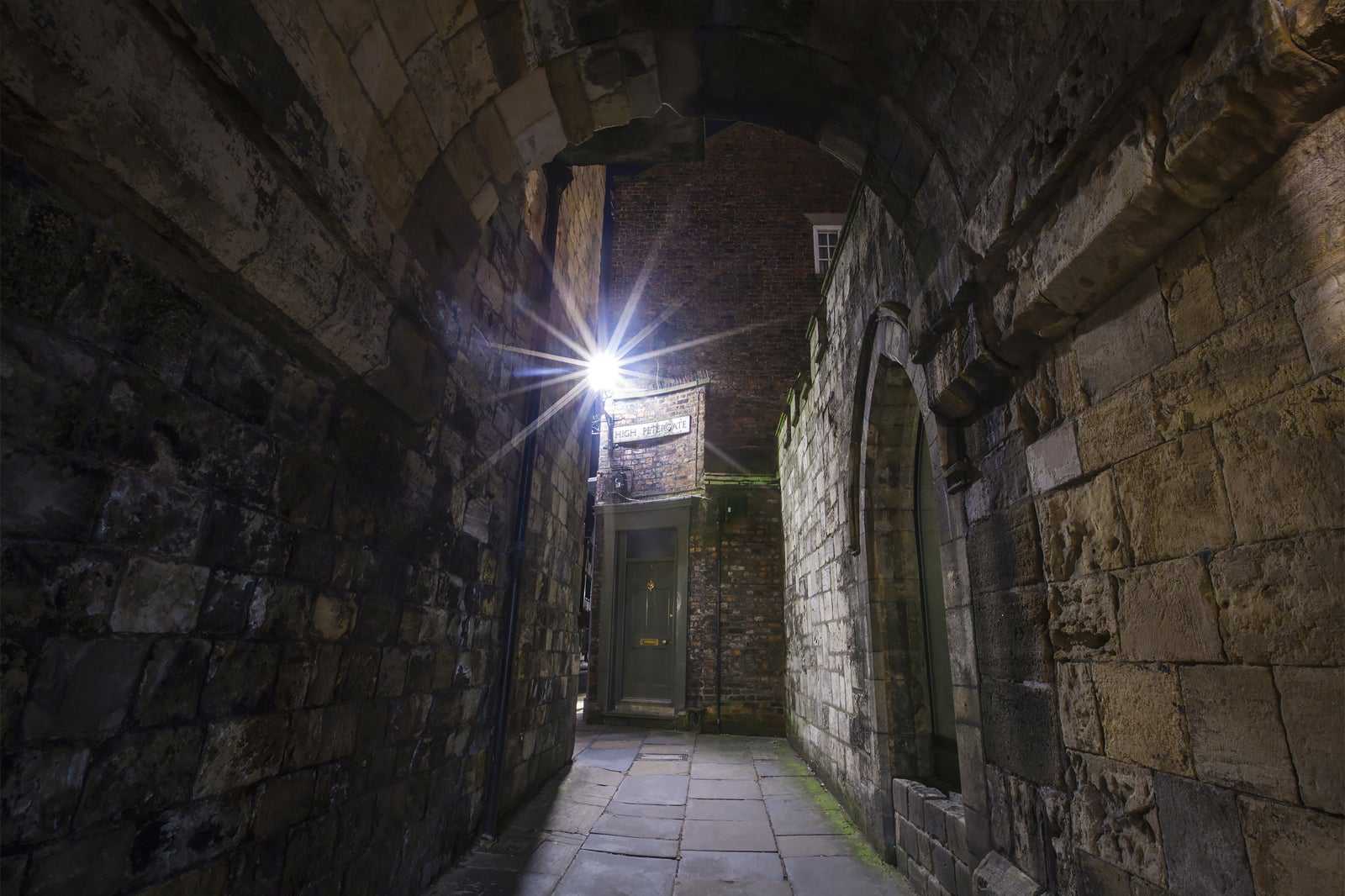
- Budget
- Photo
- Unusual
The Snickelways of York are a series of narrow alleys that connect the winding streets within York’s city walls. “Snickelway” is a portmanteau of 3 words with roughly the same meaning: “snicket”, “ginnel” – both Yorkshire dialect words – and “alleyway”. Well concealed and little known, the Snickelways often lead to interesting attractions.
Grab a copy of A Walk Around the Snickelways of York – the 1983 book by local author Mark W. Jones, who coined the term – for a walking tour of 50 of them. Among the most noteworthy are the haunted Mad Alice Lane, the riverside Fish Landing, and Coffee Yard, which contains the remarkable Barley Hall.
- 12
York Tyburn
Swing by for a quick look at where York’s gallows once stood
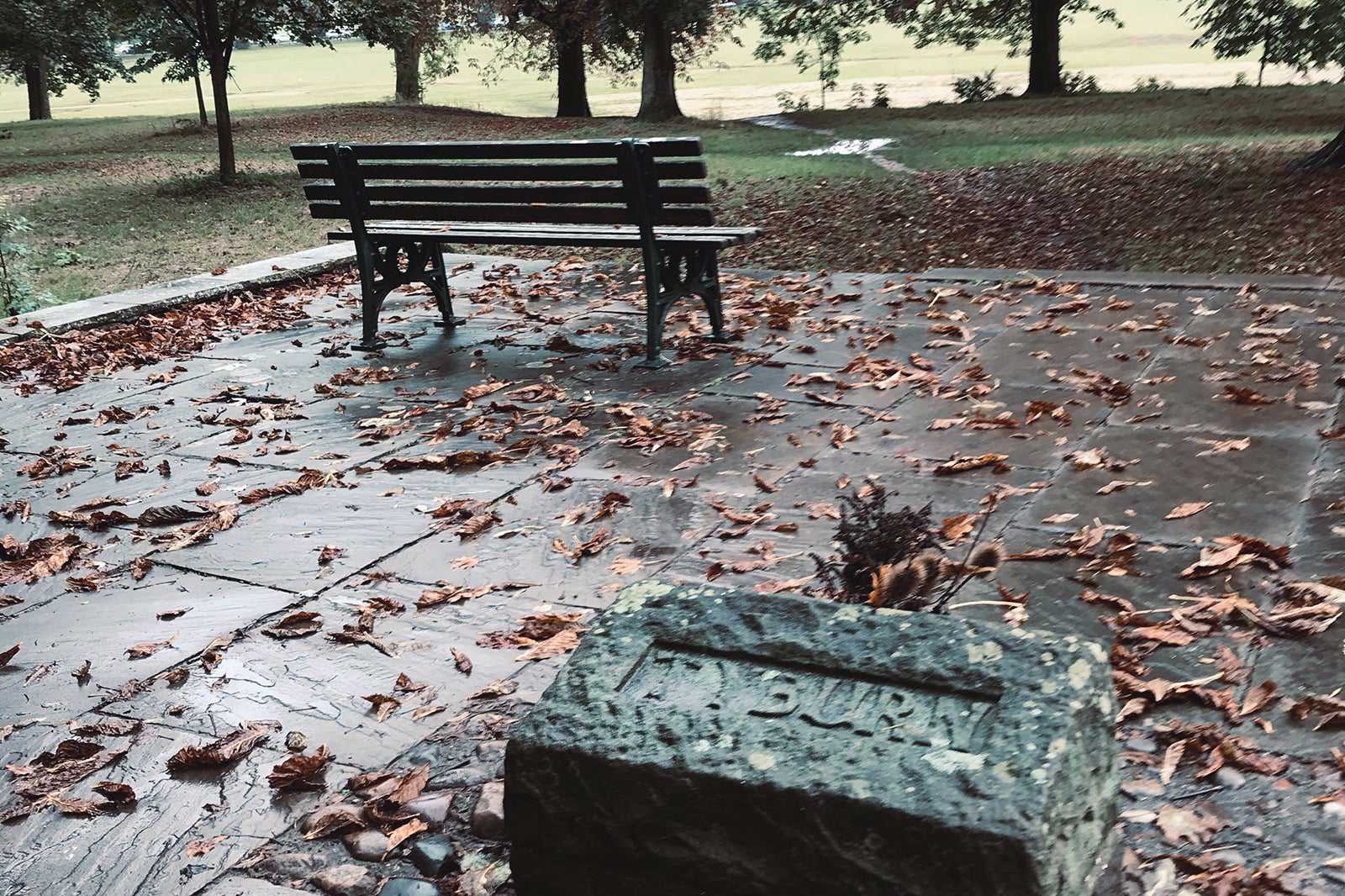
- Budget
- Photo
- Unusual
The York Tyburn is an extremely modest memorial to a rather gruesome past. It’s little more than a couple of benches and a small engraved stone on a paved patio just off the footpath along Tadcaster Road as it passes York Racecourse. However, it used to be the site of public executions.
The name of Tyburn comes from a village in Middlesex, which was where prisoners from the City of London were executed. This spot by the Knavesmire was York’s equivalent, giving it the nickname of York Tyburn. The gallows were erected here in 1379 and saw the executions of Welsh rebel Rhys ap Maredudd in 1292 and highwayman Dick Turpin in 1739. Roman Catholic priests Alexander Rawlins and Henry Walpole were martyred here in 1595, in a particularly disturbing fashion. The last hanging at York Tyburn was in 1801.
Location: 286 Tadcaster Rd York, York YO24 1ET, UK
Mapphoto by Matt Brown (CC BY 2.0) modified
